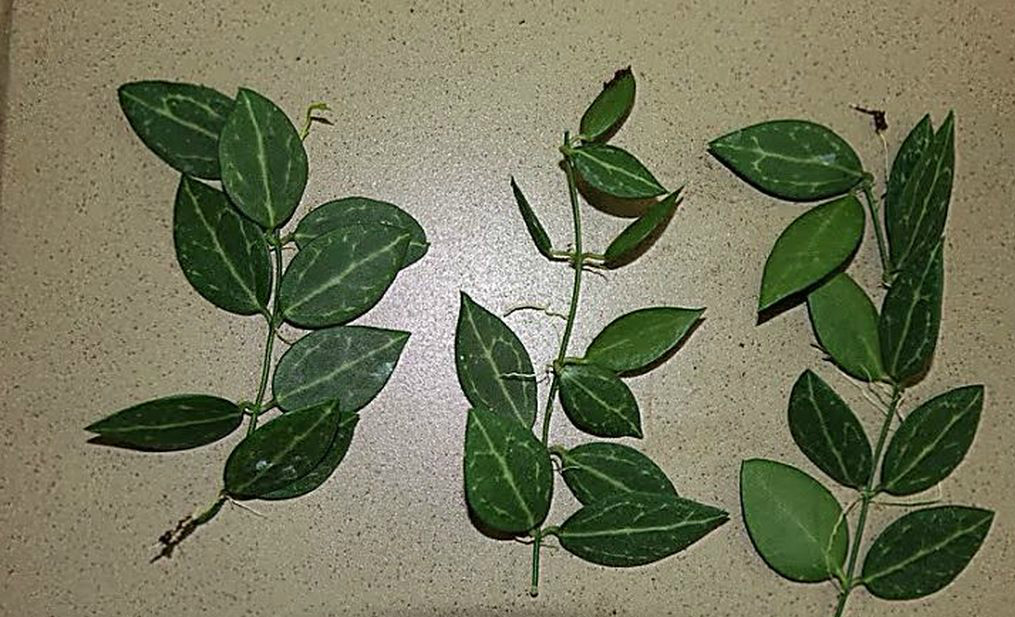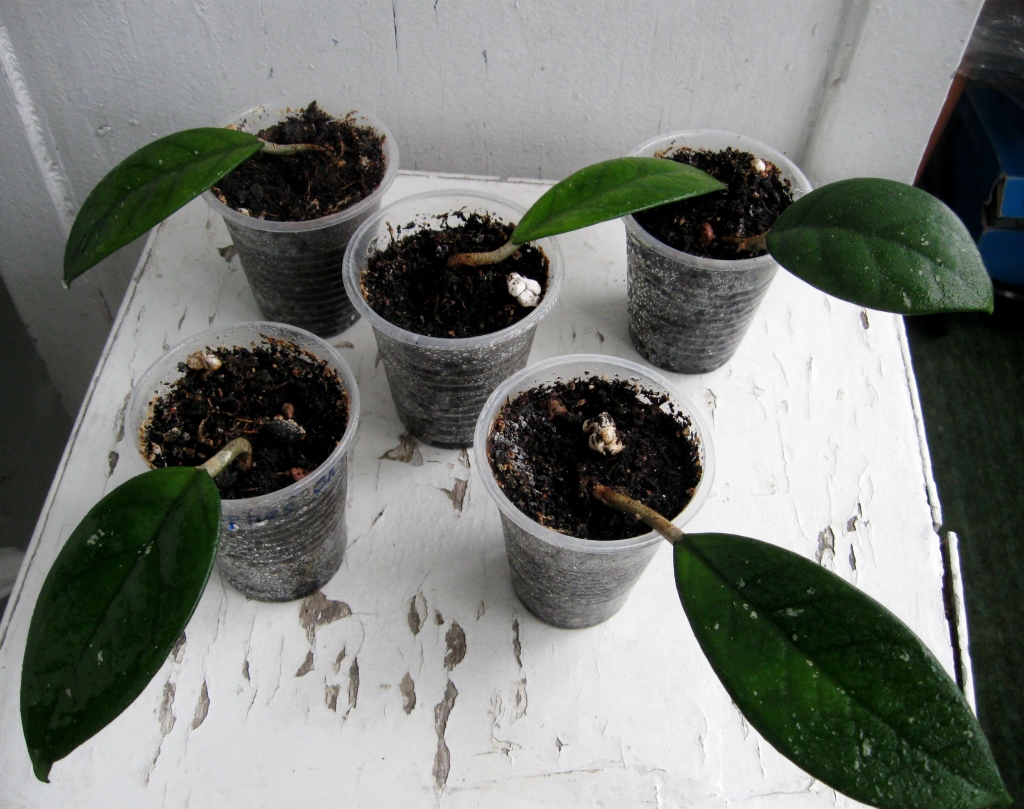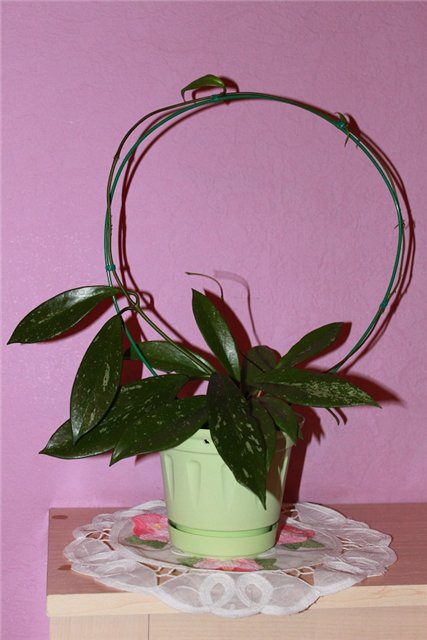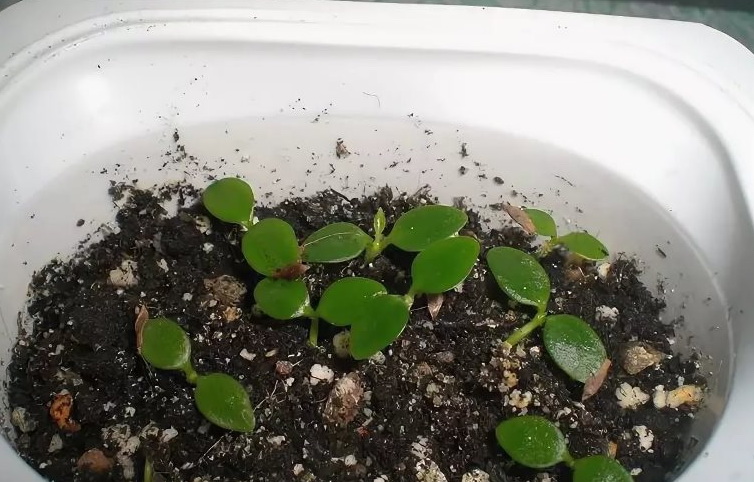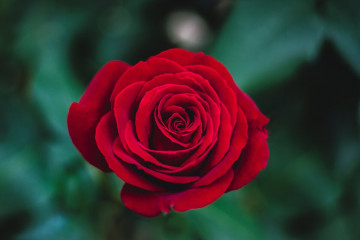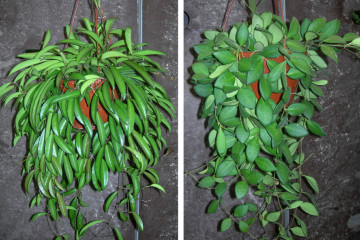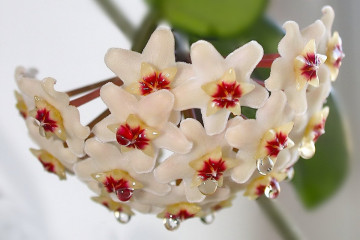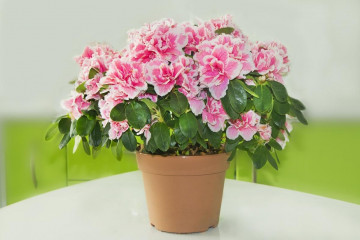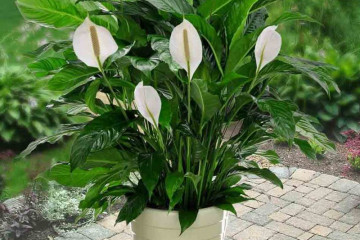Hoya propagation by cuttings, rooting and transplanting at home
Content:
A beautiful blooming liana is a frequent guest in city apartments. Hoya is a wax ivy, the reproduction of which is within the power of everyone. She comes from India and China, where in natural conditions she climbs the slopes of mountains and tree trunks. It is not difficult to get several plants from one plant at home; there are several ways for this at once.
Hoya: breeding at home
The happy owners of an adult creeper have no shortage of planting material. Its crown needs periodic molding, and all formed, but excess shoots can be easily rooted. If there is already a hoya in the house, how to multiply the question is usually not worth it.
How does it multiply
Stem layers and cuttings are the main planting material. Much less often, vines are propagated by seeds, since they are not so easy to obtain. Hoya flowers last up to 2 weeks after blooming on petioles. They are bisexual, but they need the help of pollinators to set seeds, for which they secrete a lot of thick sticky and strong-smelling nectar.
Propagation by cuttings
Young shoots of this year are not suitable for reproduction. Only last year's will do, and they should have at least 2 pairs of leaves. Cut them with a sharp knife between the knots. After that, the cutting is left for 1-2 hours to dry the cut.
There should certainly be several nodules on the cut off shoot. This increases the chances of successful rooting. However, there are usually no special difficulties with this, the vine is distinguished by exceptional vitality, its breeding is an interesting activity.
Rooting
The most common way to root cut cuttings is in water. To do this, take a container that does not transmit light. It is covered with cardboard or foil. Cuttings are inserted through the cut holes. Leaves are removed from the lower nodule and immersed in water. To speed up the process of root formation, the cut is pre-dipped in a root solution.
It requires warmth and high humidity to grow successfully. The optimum temperature is 22 ° C. If the leaves begin to wither, this indicates dry air. To correct the situation, the container with the handle is covered with a glass cap or a plastic bag to obtain greenhouse conditions.
After 2 weeks, a sufficient number of roots should form to make it possible to transplant the cuttings into the pot. The technique is rather painstaking, so many people prefer to cut more cuttings and just keep them in a warm, not too brightly lit place, regularly adding water.
The second method of rooting is by cuttings in the substrate. The soil is bought with a neutral alkaline reaction. Be sure to cover the top with a cap, which is raised once a day to spray the stalk with water. High humidity and sterility of the soil are the main components of success.
Step-by-step instructions to help root the hoya stalk with a guarantee of success:
- Too long shoot is bad, 2-3 pairs of leaves are enough. If possible, it is worth rooting several shoots.
- Small-leaved varieties are planted in pots horizontally or at an angle to cover several nodules with soil at once (up to 10 pcs.). Large-leaved cuttings are sprinkled with earth only for 1 knot.
- The temperature should be maintained at a stable level of 22 ° C.
- We must not forget about daily spraying.
- The chances of success persist as long as the shoot is green and has at least 1 leaf.
Hoya - care and growing from a leaf
If you can't get the cutting, but there is at least 1 leaf, you can try to root it too. This is the most difficult path, but not hopeless. When immersed with a petiole in a nutrient substrate, the survival rate of such material is low, since plants grown at home have too little of their own supply of substances necessary for growth.
Rooting a hoya from a leaf is a painstaking task, so it is worth following a few recommendations:
- chemicals are used to stimulate root growth. They are applied in the form of a solution, dropping from a pipette onto a sheet so that the liquid glass along the petiole;
- without petioles, the leaves take root several times worse;
- there is a little secret: a leaf is immersed in the loose earth at an angle of 45 °.
Hoya: home transplant
The plant does not need too frequent transplants. It is all the more not recommended to do this more often than necessary, since the roots of the liana are extremely fragile. Usually, transshipment into a new container is practiced no more than once every 3-4 years. This makes it very easy to care for the hoya at home. When the container becomes too close to the roots, the vine stops flowering.
The soil is bought with a neutral reaction. A universal soil is quite suitable, as is soil for flowering indoor plants. The container is taken with a sufficient number of holes to drain excess water when watering.
How to plant hoya
A container that is too spacious for a vine is not suitable. There she will grow greens, but will not bloom, even if you take good care of her. The material of the pot does not matter in principle. It can be plastic, ceramics, glass, most importantly, it must be opaque. Moisture does not linger in clay containers, so the flower in it will have to be watered more often.
Before transplanting, the hoya is well watered so that the earthen lump with roots is as easy as possible to remove and not damaged. It is best to transfer the plant into a new container, adding fresh soil. The whole procedure is done slowly so as not to break the shoots and roots. Be sure to install a support along which the vine will start up new shoots.
How to grow hoya from seeds at home
Not the most popular breeding method is by seeds. Only fresh seeds are required (no older than 1 year), they have a brown shell. They are slightly dried, and then planted in soil with a high hygroscopicity. For this, natural fibers (flax, felt, burlap) are even added to it.
Germination rate is 7 days. A short green stalk appears first on the surface of the planting container, on which leaves appear afterwards. At this time, the following rules should be strictly observed:
- the soil should always be slightly moist;
- waterlogging is dangerous, as it can provoke rotting of sprouts;
- regularly spray the substrate with fungicides to prevent the formation of mold;
- if the pots are in the open air, then snails and slugs are the greatest threat to them, so it is worth choosing a place higher above the ground.
Sphagnum balls, which are wrapped in a nylon net, are well suited for germinating hoya seeds. Wet moss will not deform. The seeds hatch perfectly through the net. The sprouts are transplanted to a permanent place together with sphagnum. This is the most gentle method for thin and fragile roots.
Planting hoya seeds in a pot
In the container where the seeds were sown, the sprouts are left for 3 months. This time will be enough for the young vines to gain strength, get stronger, and grow a few leaves. Do not be surprised that all plants will be very different in size. It's quite normal. Only the strongest and strongest of them are left. Weak shoots should be thrown away, since it is unlikely to get a strong vine out of them, and they will require a lot of effort and time.
Sometimes a close examination of the shoots reveals that there are mutated specimens among them. This is also not uncommon. There is a small chance that a new variety was formed due to crossing. Therefore, all sprouts should be given a chance for life until they fully demonstrate all their specific features: color and shape of leaves, size, etc.
If, after 1-2 weeks after sowing, the sprouts have not appeared, you do not need to wait longer, it is impossible to make them appear. There may be several reasons for this:
- the planting material is too old, therefore it has lost its vitality;
- rootlets rotted due to excessive soil moisture.
It is quite difficult to find hoya seeds on the free market. At home, they are usually not tied. The only chance is to buy from the online store. But there is no guarantee that the planting material will be of really good quality. It is much easier to purchase a cutting in a specialized store, and some even offer rare and especially beautifully flowering varieties on order.
Considering how easy it is to propagate a home vine, it is not surprising that the number of its fans is so large. Beautiful greenery and flowers are a real decoration of any home, available even to novice florists. And you can always make a living gift from cuttings, just choose a suitable pot!

